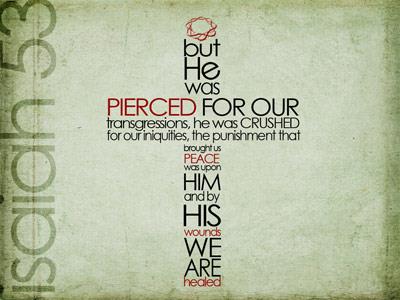-
Forgiveness Unlimited Series
Contributed by Philip Makari on Nov 28, 2017 (message contributor)
Summary: The second word from the cross speaks of God’s unconditioal love in Christ, his forgiveness and acceptance of the worst of sinners.
FORGIVENESS UNLIMITED
Text: “I tell you the truth, today you will be with me in paradise.” Luke 23:43
INTRODUCTION
It is no accident that the Savior of humanity was crucified between two criminals. From eternity past, God had planned the time, the place, the method and the circumstances of Messiah’s death. All that he had decided came to pass exactly as he ordained. Herod and Pontius Pilate, unknowingly, did what God’s "power and will had decided beforehand should happen" (Acts 4:28).
God had revealed through Isaiah that Messiah was to be "numbered with the transgressors" (Is 53:12), that he would be “assigned a grave with the wicked” (Is 53:9), that they would “cast lots for his clothing” (Psalm 22:18), that “not one of his bones would be broken” (Psalm 34:20). This shows us that not a single word of God is empty talk.
There were only three to be crucified on that day. They were hung together. To increase the humiliation of and shame of Jesus, the Roman soldiers placed him in the middle. “The one who gets the nails is hung in the middle,” was their cynical attitude. He was considered the worst of the three. He caused more turmoil to both, Romans and Jews. To the Jews he was blasphemous, to the Romans he was the king’s competition. But placing him in the middle was also by a decree from God. Jesus is a constant divider of humanity (Matthew 10:34). On the day of the judgment that will be the case on a much larger scale.
There were three crosses on that day. The scene was a parable of what always is. There are only three possibilities in connection to salvation. There is the Provider, there is the receiver, and there is the rejecter. There is One who died for sin, there are those who die to sin, and there are those who die in sin. There are only three crosses. There is the cross of redemption, there is the cross of reception, and there is the cross of rejection. There are only three people. There is the Savior, there is the saint, and there is the sinner. There are no other possibilities in regards to responding to God’s salvation. That is the basic point of those three crucifixions on that day.
God used Jesus and the two criminals to dramatize the only possible responses to God’s promised Messiah: belief and unbelief, acceptance and rejection, repentance and impenitence.
THE MESSAGE:
A closer look at the three crosses will illustrate for us how salvation or the forgiveness of sin is achieved.
First: The Cross of Redemption. This is the cross of Jesus. It is in the center. It is the greatest of the three in that it is the central doctrine in all scriptures. Herbert Lockyer says, “ At the old rugged cross we see man at his worst, but God at his best.” This was God’s love in action. Creation reveals God’s power and wisdom but is silent as to his love for sinners. It is only at the cross and from the cross that we learn about his love for sinners. The wages of sin is death (spiritual, physical, and eternal). Jesus, by his death offered an escape from the spiritual and eternal deaths, and defeated the sting of physical death. He died as ransom for many. Although we can not understand the mystery of it all, it nevertheless is clear that God’s offer of salvation through the cross of Jesus is not only common sense (since we are not capable of sacrificing for our sins), but also the only solution to rescuing us from the power, guilt and curse of sin. It takes a blameless person to atone for those who are stained with sin. But Christ’s death does not only open the gate of heaven for us. It also enables us to live now as transformed. It is one thing to believe in Christ and a different matter to live a crucified life.
Second: The Cross of Reception. This is the cross of the criminal whose life was short but blessed. It is said of him, “in the morning he was in nature lost and condemned; at midday, he was in grace, his black past erased; by the end of the day he was in glory, sharing its joy with the One who redeemed him.” It was said of him also that he was “ the first trophy of Christ’s redemptive work.” But there is more:
1. Here is a proof that faith alone saves. Had that thief lived, his faith would have manifested itself in works. Works do not save us, but they are the natural outcome of true faith.
2. Here is a proof that upon death we are transferred into the presence of our glorified Christ. There is no waiting period; Jesus said, “Today you will be with me in paradise.”

 Sermon Central
Sermon Central



